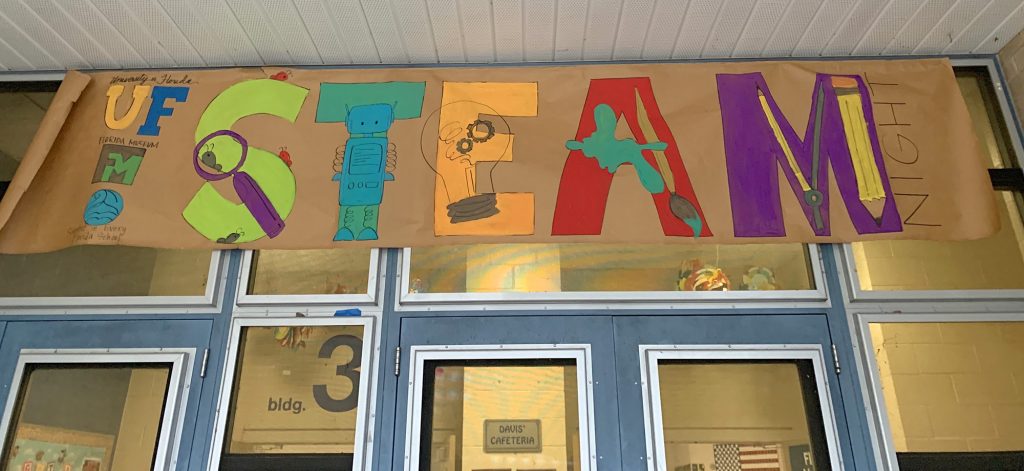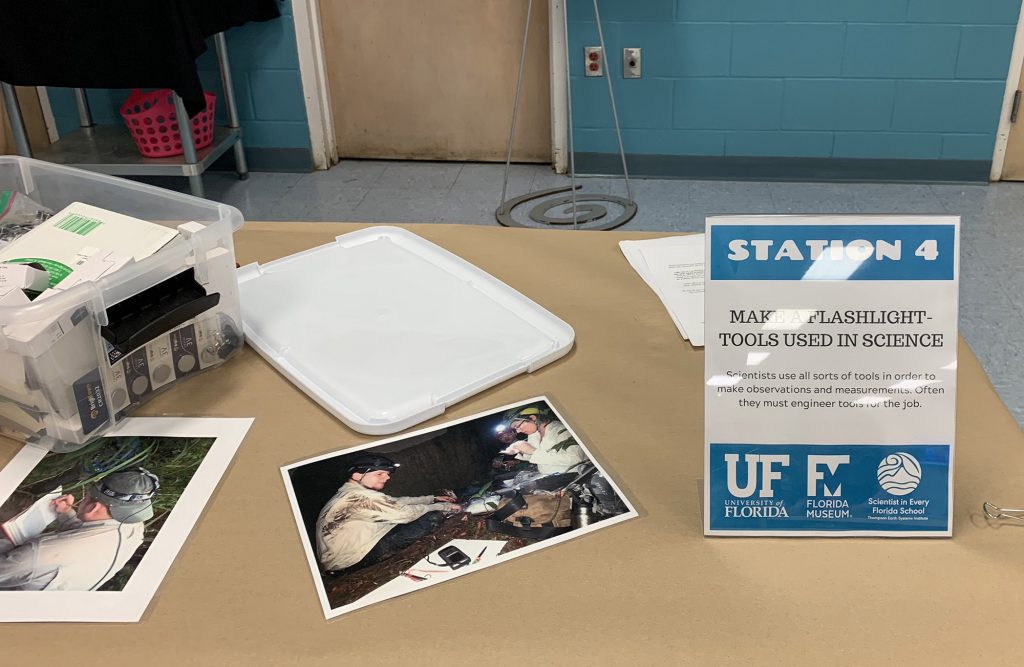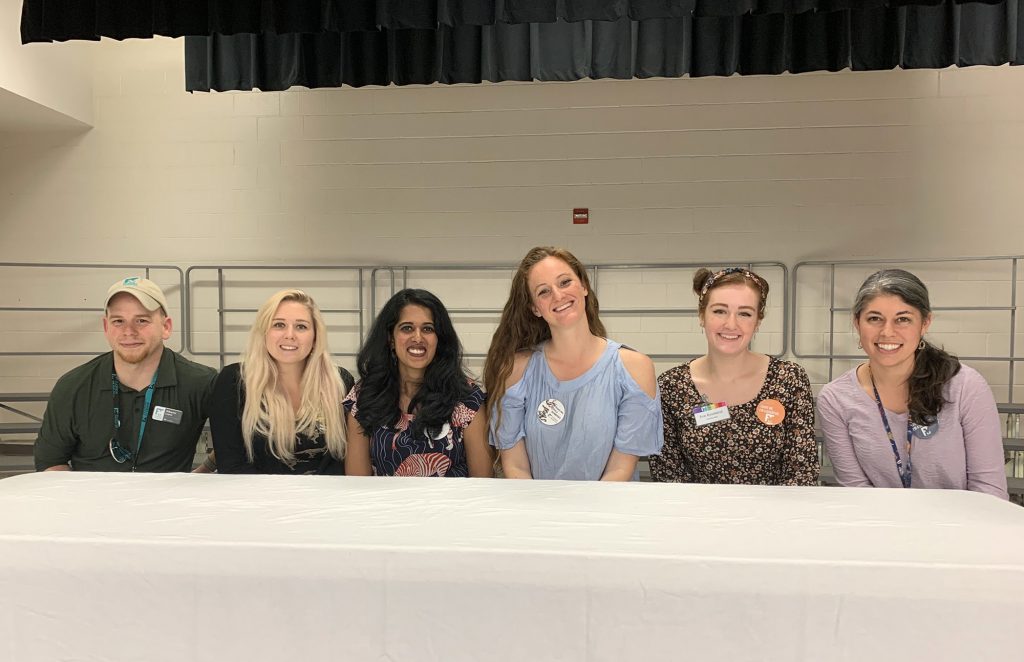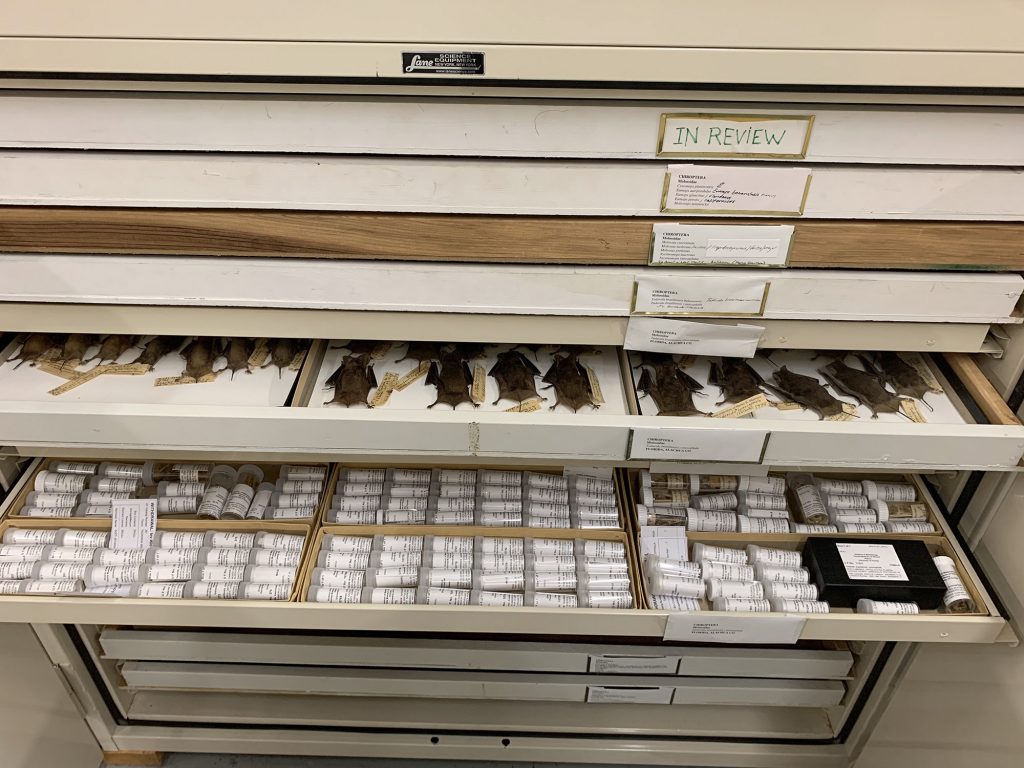As I am getting ready for STEAM Night at Lawton Chiles Elementary School, I am faced with a familiar conundrum: what do I wear that will make me look professional and scientist-like and also fun and approachable? Which begs the question, “What DOES a scientist look like?”
I settle on a blue dress with zebras and look outside my window. Ah, Rainesville! As I sit in traffic, my friends/fellow scientists frantically text me about the traffic conditions. “Step 1 to doing outreach: Show up early.” I’m surprised when I am greeted by a full parking lot. Gosh, those kids must be ready to learn about science!

Alberto Lopez, the Florida Museum School Outreach Coordinator, has everything set up and introduces me to the volunteers who will help me out tonight. Turns out, I’m a bat biologist and will show people how to make flashlights using popsicle sticks, copper wire, batteries and bulbs — because flashlights are important — especially in the field. (Always carry three headlamps-one on your head, one around your neck and one in your pocket because you never know when the batteries will run out in a deep, dark cave. But that’s a story for another day).

As I arranged the brightly colored bulbs on my table, nothing could have prepared me for the number of people who showed up at Station 4. The kids could barely contain their excitement with popsicle sticks in hand, ready to make a flashlight. It’s a truly humbling experience when you try to interact with several students all at once, while trying to make each one enjoy their time at your station.
This brings me to “Step 2 for doing outreach: Learn how to improvise.” The school band seemed to match the tempo of the people showing up as they played a fast tune. Due to the sheer number of people who attended (350+), Alberto helped us modify the flashlights so that we could make them a tad faster.
Toward the end of the evening, we headed up to the stage for a panel discussion. Alberto introduced us to the audience who quietly lined up with their questions. Kids will ask you anything under the sun and they clearly keep up with current events. They ask hard-hitting questions and it’s okay to not know all the answers. “Step 3: I don’t know all the answers.” It’s why I love doing science.

“Step 4: Love what you do.” My favorite question came from a little boy who asked why we got into science. I love that I get to work in the collections at the Museum. I like the fact that each specimen holds a special story and that I get to share it with people.

This brings me to “Step 5: Have fun.” I appreciate the fact that so many parents brought their kids to an after school program on a Tuesday night. You need that support to fall in love with science. I have so much fun doing outreach events, it is truly what keeps me going!
Aditi Jayarajan is a Ph.D. student working in our mammals collection.
Florida Museum Science Night
For the first time, we are offering the opportunity for schools to host a Florida Museum Science Night in which the Museum provides all of the programing for the event. We offer a number of different activities about subjects related to Florida natural history led by scientists and educators. Topics include: Early Native People, Amphibians and Reptiles, Birds, Bats, Paleontology, etc. If you prefer a specific subject just let us know what subjects interest you the most. If your school has never had a STEM/Science night, this is a great opportunity to dip your toes into science-focused events for families.
The event at Lawton Chiles on Feb. 25 was attended by about 350 students and their parents. This is the third STEM Night we’ve coordinated, for a total of over 700 guests.
Alberto Lopez is the School Outreach Coordinator on our Education Team.
Read more about his outreach work:
Florida Museum introduces new science outreach programs for Gainesville children